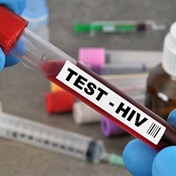
iStock
Over the past decade, South Africa has made a dramatic reversal in child survival – mainly because of improvements in HIV/Aids care, reports a study in AIDS, official journal of the International AIDS Society.
"After years of rising mortality rates, the mortality picture for South Africa's children has shifted drastically," according to the report by Kate Kerber, MPH, of University of the Western Cape, Belleville, South Africa, supported by the global Child Health Epidemiology Reference Group (CHERG). "Opaque and conflicting messages have been replaced by data that can be used for action and accountability."
Rapid progress made
As part of an effort to determine the causes of neonatal and child deaths in South Africa, the researchers analyzed multiple sources of data to estimate mortality trends in infants and children under age five –especially from HIV/Aids – nationally between 1990 and 2011.
In past years, HIV control measures were "hampered by denial of the HIV epidemic and weak political leadership," according to the authors. Reducing mortality in children under five is the key focus of the United Nations' fourth Millennium Development Goal.
Although estimates varied, all sources showed similar trends, suggesting that under-five mortality peaked around 2005. "In 2005, South Africa was one of only four countries globally with an under-five mortality rate higher than the 1990 Millennium Development Goal baseline," Kerber and colleagues write. At that time, up to 39 percent of all deaths in children younger than five were due to Aids.
But the trend has subsequently reversed, corresponding to "major political and programme changes" in South Africa. Depending on the data source, the researchers estimate that mortality in South African children under five has decreased by 6% to 10% per year since 2006. The proportion of under-five deaths due to Aids has fallen to between 11 and 24%.
Officially, South Africa is still not on pace to achieve the Millennium Development Goal of a two-thirds reduction in under-five mortality by 2015 (with 1990 as the baseline year). However, the rate of improvement since 2005 has been impressive – the fourth-fastest globally and second only to Rwanda among African countries.
"The recent rate of decline is similar to improvement in other middle-income countries lauded for progress in reducing child mortality, such as Brazil and China," according to the researchers.
Mother-to-child transmission
Rapid scale-up of measures to prevent mother-to-child transmission of HIV has been the major factor in reducing under-five mortality in general, and deaths from Aids in particular, the researchers believe. The expanded rollout of antiretroviral drug therapy to infected children has been a lesser but significant contributing factor.
If the current level of progress continues, South Africa could meet the Millennium Development Goal for under-five mortality by the end of the current decade, Kerber and colleagues believe. However, they emphasise that this will require a continued focus on critical objectives – not only on measures to prevent deaths from HIV/Aids but also infections and other important causes of child mortality.
"Failure to address other aspects of care, including integrated high-quality maternal and neonatal care means that the decline in child mortality could stall," Kerber and co-authors write. They also emphasize the need for continued efforts to improve collection of high-quality data for use in planning health policy.
"After years of rising mortality rates, the mortality picture for South Africa's children has shifted drastically," according to the report by Kate Kerber, MPH, of University of the Western Cape, Belleville, South Africa, supported by the global Child Health Epidemiology Reference Group (CHERG). "Opaque and conflicting messages have been replaced by data that can be used for action and accountability."
Rapid progress made
As part of an effort to determine the causes of neonatal and child deaths in South Africa, the researchers analyzed multiple sources of data to estimate mortality trends in infants and children under age five –especially from HIV/Aids – nationally between 1990 and 2011.
In past years, HIV control measures were "hampered by denial of the HIV epidemic and weak political leadership," according to the authors. Reducing mortality in children under five is the key focus of the United Nations' fourth Millennium Development Goal.
Although estimates varied, all sources showed similar trends, suggesting that under-five mortality peaked around 2005. "In 2005, South Africa was one of only four countries globally with an under-five mortality rate higher than the 1990 Millennium Development Goal baseline," Kerber and colleagues write. At that time, up to 39 percent of all deaths in children younger than five were due to Aids.
But the trend has subsequently reversed, corresponding to "major political and programme changes" in South Africa. Depending on the data source, the researchers estimate that mortality in South African children under five has decreased by 6% to 10% per year since 2006. The proportion of under-five deaths due to Aids has fallen to between 11 and 24%.
Officially, South Africa is still not on pace to achieve the Millennium Development Goal of a two-thirds reduction in under-five mortality by 2015 (with 1990 as the baseline year). However, the rate of improvement since 2005 has been impressive – the fourth-fastest globally and second only to Rwanda among African countries.
"The recent rate of decline is similar to improvement in other middle-income countries lauded for progress in reducing child mortality, such as Brazil and China," according to the researchers.
Mother-to-child transmission
Rapid scale-up of measures to prevent mother-to-child transmission of HIV has been the major factor in reducing under-five mortality in general, and deaths from Aids in particular, the researchers believe. The expanded rollout of antiretroviral drug therapy to infected children has been a lesser but significant contributing factor.
If the current level of progress continues, South Africa could meet the Millennium Development Goal for under-five mortality by the end of the current decade, Kerber and colleagues believe. However, they emphasise that this will require a continued focus on critical objectives – not only on measures to prevent deaths from HIV/Aids but also infections and other important causes of child mortality.
"Failure to address other aspects of care, including integrated high-quality maternal and neonatal care means that the decline in child mortality could stall," Kerber and co-authors write. They also emphasize the need for continued efforts to improve collection of high-quality data for use in planning health policy.




 Publications
Publications
 Partners
Partners














